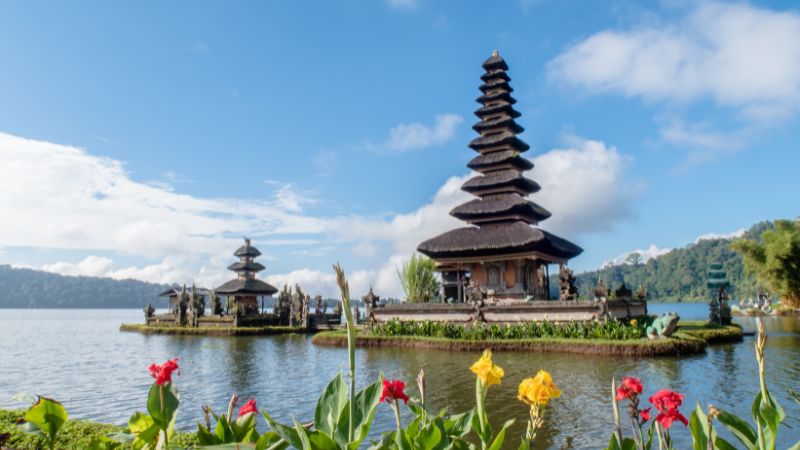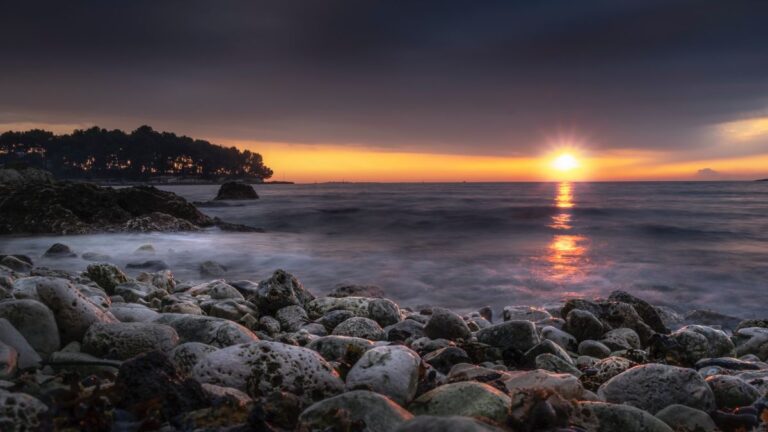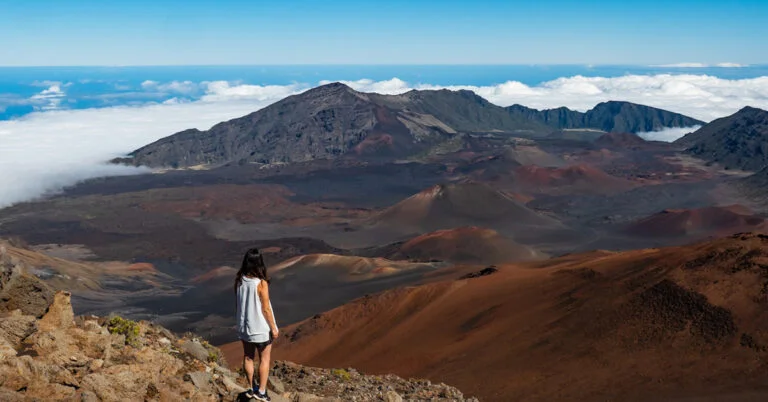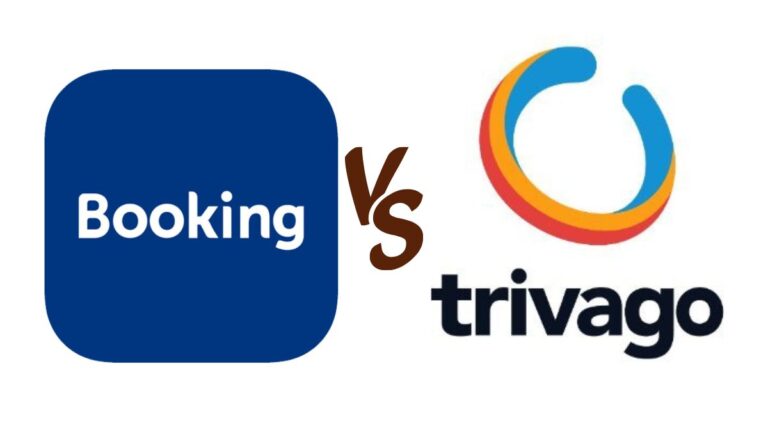Worst Time To Visit Bali: Don’t Go During These Rainy and Crowded Months

As participants in Amazon Associates and other programs, we earn from qualifying purchases. This comes at no additional cost to you. For more details, see our Affiliate Disclosure.
Bali is one of Southeast Asia’s most popular tourist destinations, known for its beautiful beaches, lush jungles, and unique culture. However, with its tropical climate and high tourist volume, not all times of the year are equal when visiting the Island of the Gods. Knowing the different seasons and their respective advantages and drawbacks is important to plan your trip accordingly.
While Bali is generally a year-round destination, certain months are best avoided due to excessive rainfall and overcrowding. This article will explore the worst times to visit Bali and why you should consider adjusting your travel plans to avoid these periods. By understanding the weather patterns, peak tourist seasons, and cultural events, you can plan your Bali vacation to ensure an enjoyable and memorable experience.
Understanding Bali’s Weather Patterns
Bali has a tropical climate with two distinct seasons: the dry season (April-September) and the wet season (October-March). The dry season is characterized by sunny days and low humidity, while the wet season brings heavy rainfall and high humidity.
During the rainy season, Bali experiences monsoonal rains, which can cause flooding and landslides in certain areas. The weather can be unpredictable, with intermittent periods of sunshine and rain. However, the rainy season has advantages like lower prices, fewer tourists, and a lush, green landscape.
On the other hand, the dry season is considered the peak tourist season in Bali. The weather is warm and sunny, and the seas are calm, making it the ideal time for water activities such as surfing, snorkeling, and diving. However, with the high number of visitors, prices can be higher, and some popular tourist spots can be crowded.
Peak Tourist Seasons and Overcrowding in Bali
Bali’s peak tourist season is during the dry season (April-September), particularly July and August when many families travel to Bali during school holidays. During this time, Bali can become extremely crowded, with popular tourist spots, such as beaches and temples, seeing an influx of visitors.
The high season also means higher prices for accommodations, tours, and activities, as demand is at its peak. It’s essential to book in advance during this period to secure your preferred accommodations and activities.
The influx of tourists during peak season can lead to overcrowding, particularly in tourist hotspots such as Kuta and Seminyak. Traffic can also be heavy, particularly during peak travel times such as weekends and public holidays.
If you prefer to avoid crowds, consider visiting Bali during the shoulder seasons, such as April, May, September, and October, when the weather is still pleasant and prices are lower. The low season (November-March) is the least busy time, with fewer tourists and lower prices, but this also means more rainfall and unpredictable weather.
The Pros and Cons of Visiting Bali During the Rainy Season
The rainy season in Bali (October-March) can be both a blessing and a curse, depending on your preferences and travel goals. Below are the pros and cons of visiting Bali during the rainy season.
Pros:
- Lush green landscapes: The rainfall during the rainy season creates lush greenery and vibrant colors, making Bali’s landscapes even more beautiful.
- Lower prices: The low season means lower prices for accommodations, tours, and activities, making it an ideal time for budget-conscious travelers.
- Fewer crowds: With fewer tourists during the rainy season, you can enjoy Bali’s attractions and activities without the crowds, making it a more peaceful and relaxing experience.
Cons:
- Heavy rainfall: The rainy season in Bali can bring heavy rainfall, which can disrupt travel plans, cause flooding and landslides, and limit outdoor activities.
- Humidity: The rainy season is also more humid than the dry season, making it uncomfortable for some travelers.
- Unpredictable weather: The weather during the rainy season can be unpredictable, with intermittent periods of sunshine and rain making it challenging to plan outdoor activities.
Visiting Bali during the rainy season can be a unique and rewarding experience, with fewer crowds, lower prices, and lush landscapes. However, travelers should also be prepared for the potential drawbacks of heavy rainfall, humidity, and unpredictable weather.
The Advantages and Disadvantages of Visiting Bali During High Season
Bali’s high season (April-September) is the peak tourist season, with warm and sunny weather and many activities and events. Here are the advantages and disadvantages of visiting Bali during the high season:
Advantages:
- Ideal weather conditions: Bali’s dry season is perfect for outdoor activities such as surfing, snorkeling, and sunbathing.
- Wide range of activities: The high season offers various activities and events, including festivals, concerts, and cultural events.
- Vibrant nightlife: The high season brings a bustling nightlife scene, with bars, clubs, and restaurants open late into the night.
- Variety of accommodations: The high season offers many accommodations, from budget-friendly hostels to luxurious villas and resorts.
Disadvantages:
- Crowded tourist spots: Bali’s popular tourist spots, such as beaches and temples, can become overcrowded during the high season, making it challenging to enjoy the attractions.
- Higher prices: The high season also means higher prices for accommodations, tours, and activities, which can strain your budget.
- Traffic congestion: With more tourists, Bali’s roads can become congested during the high season, leading to longer travel times and potential delays.
Visiting Bali during the high season can be a fantastic experience, with ideal weather conditions, a wide range of activities, and a vibrant atmosphere. However, travelers should be prepared for higher prices, crowded tourist spots, and traffic congestion.
Special Events and Festivals: How They Impact Bali’s Crowds and Prices
Bali is known for its vibrant cultural events and festivals, which can attract crowds of tourists and impact prices for accommodations, tours, and activities. Some of the most popular festivals and events in Bali include:
- Nyepi Day: Bali’s Day of Silence, which falls in March or April and involves a day of silence, fasting, and meditation.
- Galungan and Kuningan: A Hindu holiday celebrated every 210 days to honor ancestral spirits and deities.
- Bali Arts Festival: A month-long celebration of Balinese arts and culture featuring dance performances, music, and food.
- Ubud Writers and Readers Festival: An annual festival celebrating literature and ideas, featuring international and local writers.
During these festivals and events, prices for accommodations, tours, and activities can increase due to high demand. Popular tourist spots can also become overcrowded, making it challenging to enjoy the attractions fully. However, attending these events can be a unique and rewarding experience, providing insights into Balinese culture and traditions.
Best Time to Visit Bali: A Month-by-Month Guide
Bali is a year-round destination, but the best time to visit depends on your preferences and travel goals. Here’s a month-by-month guide to help you plan your Bali trip:
- January: The low season continues in January, with occasional rainfall and lower prices. It’s an excellent time to enjoy Bali’s natural beauty without the crowds.
- February: February marks the end of the rainy season and the start of the dry season. The weather is pleasant, and prices are still relatively low.
- March: The weather is warm and dry, making it an ideal time for outdoor activities. However, prices can start to rise as the high season approaches.
- April: The high season begins in April, with warm and sunny weather and various activities and events. It’s a popular time for families, and prices can be higher.
- May: May is an excellent time to visit Bali, with fewer crowds and lower prices than the peak months. The weather is still dry and pleasant.
- June: June is the start of peak season, with warm and sunny weather and a bustling atmosphere. Prices can be higher, and popular tourist spots can be crowded.
- July: July is the busiest month in Bali, with high prices and heavy crowds. However, it’s also an ideal time for water activities such as surfing and snorkeling.
- August: August is another busy month in Bali, with warm and sunny weather and a vibrant atmosphere. It’s an excellent time for families and couples.
- September: September marks the end of peak season, with pleasant weather and fewer crowds. Prices can still be high, but more deals are available than in July and August.
- October: The rainy season begins in October, with occasional downpours and lower prices. It’s an excellent time for budget-conscious travelers.
- November: November is still part of the low season, with occasional rain and lower prices. It’s an ideal time for those looking for a quieter experience.
- December: The rainy season continues in December, but the holiday season can bring higher prices and crowds. However, it’s also an excellent time for cultural events and festivals.
In summary, Bali’s weather patterns and cultural events can impact the best time to visit. Whether you’re looking for warm and sunny weather, lower prices, or cultural experiences, there’s a time of year perfect for your Bali trip.
Tips for Traveling to Bali During Crowded and Rainy Months
Traveling to Bali during the crowded and rainy months can be challenging, but there are ways to make the most of your trip. Here are some tips for traveling to Bali during the high season and rainy season:
- Book accommodations and activities in advance: With a high volume of tourists during peak season, accommodations and activities can book up quickly. To avoid disappointment, book in advance.
- Avoid popular tourist spots during peak times: Popular tourist spots such as beaches and temples can be overcrowded during peak season. Visit them early in the morning or late in the afternoon to avoid crowds.
- Consider visiting lesser-known destinations: Bali has many hidden gems that are less popular among tourists. Explore these destinations to avoid crowds.
- Pack appropriately for the rainy season: Bring waterproof clothing, shoes, and a travel umbrella to stay dry during the rainy season.
- Stay informed about weather conditions: Bali’s weather can be unpredictable during the rainy season. Stay informed about weather conditions and plan your activities accordingly.
- Be patient with traffic: With a high volume of tourists, traffic can be heavy during peak season. Plan and be patient.
- Stay hydrated: Bali’s high temperatures and humidity can be challenging, particularly during the rainy season. Stay hydrated by drinking plenty of water.
Traveling to Bali during crowded and rainy months can be challenging, but by planning, staying informed, and being flexible, you can still have a memorable and enjoyable trip.
Alternative Activities for Rainy Days in Bali
Rainy days in Bali can disappoint those hoping to spend time on the beach or engage in outdoor activities. However, plenty of alternative activities can be enjoyed when the weather turns bad. Here are some ideas:
- Visit Bali’s museums and galleries: Bali has a rich cultural heritage, and many museums and galleries showcase the island’s art and history.
- Take a cooking class: Bali’s cuisine is renowned for its bold flavors and fresh ingredients. Take a cooking class to learn how to cook traditional Balinese dishes.
- Go shopping: Bali is a shopper’s paradise, with many markets, boutiques, and malls. Spend a rainy day browsing for souvenirs and gifts.
- Visit a spa: Bali is famous for its spas and wellness centers. Indulge in a massage, facial, or other spa treatment to relax and rejuvenate.
- Attend a workshop or class: Bali has a thriving creative community, and there are many workshops and classes on offer, such as yoga, painting, and dance.
- Explore Bali’s indoor attractions: Bali has many indoor attractions, such as temples, caves, and waterfalls. Spend a rainy day exploring these unique sites.
- Watch a movie: Bali has several cinemas that show international and local films. Catch a movie to pass the time on a rainy day.
In summary, Bali has plenty of alternative activities to enjoy on rainy days. Whether you’re interested in art, food, shopping, or wellness, there’s something to suit everyone’s tastes.
Off-Season Travel: A Budget-Friendly Option for Bali Visitors
Traveling to Bali during the off-season (November-March) can be a budget-friendly option for visitors. While the weather can be unpredictable during this time, there are several advantages to traveling during the low season:
- Lower prices: During the low season, prices for accommodations, tours, and activities can be significantly lower than during peak season, making it an ideal time for budget-conscious travelers.
- Fewer crowds: With fewer tourists during the off-season, popular tourist spots, and attractions are less crowded, making it easier to enjoy them fully.
- Unique experiences: The rainy season brings a unique landscape to Bali, with lush greenery and dramatic skies. It’s also an excellent time to witness cultural events and festivals.
- More personalized service: With fewer tourists during the off-season, hotels, restaurants, and tour operators can offer more personalized service and attention.
- Ideal for relaxation: The low season can be an excellent time to relax and unwind, with fewer distractions and a quieter atmosphere.
However, it’s important to remember that Bali’s weather can be unpredictable during the low season, with occasional rainfall and cloudy skies. Researching the specific activities and attractions you’re interested in is essential, as some may be closed during the off-season.
Choosing the Best Time to Visit Bali for You
Choosing the best time to visit Bali depends on your preferences and travel goals. Here are some factors to consider when deciding when to visit Bali:
- Weather: Bali’s weather can be a significant factor in deciding when to visit. If you prefer warm and sunny weather, the dry season (April-September) is the best time to visit. However, if you enjoy a lush, green landscape and occasional rainfall, the rainy season (October-March) may be more appealing.
- Crowds: Bali can become crowded during peak season (April-September), with higher prices and long wait times at popular tourist spots. The low season (October-March) may be a better option if you prefer a quieter atmosphere and lower prices.
- Budget: Bali’s prices can vary depending on the season. If you’re on a tight budget, traveling during the low season can save you money on accommodations, tours, and activities.
- Interests: Bali has many activities and events throughout the year. If you’re interested in surfing or other water activities, the dry season is the best time to visit. The low season may provide more opportunities if you’re interested in cultural events and festivals.
- Travel style: Your style can also impact the best time to visit Bali. The low season may be more appealing if you prefer a more relaxed and quieter atmosphere. The high season may be a better option if you enjoy bustling nightlife and a vibrant atmosphere.
In summary, choosing the best time to visit Bali depends on your preferences and travel goals. Considering the weather, crowds, budget, interests, and travel style, you can find the ideal time to visit Bali and have a memorable and enjoyable trip.






